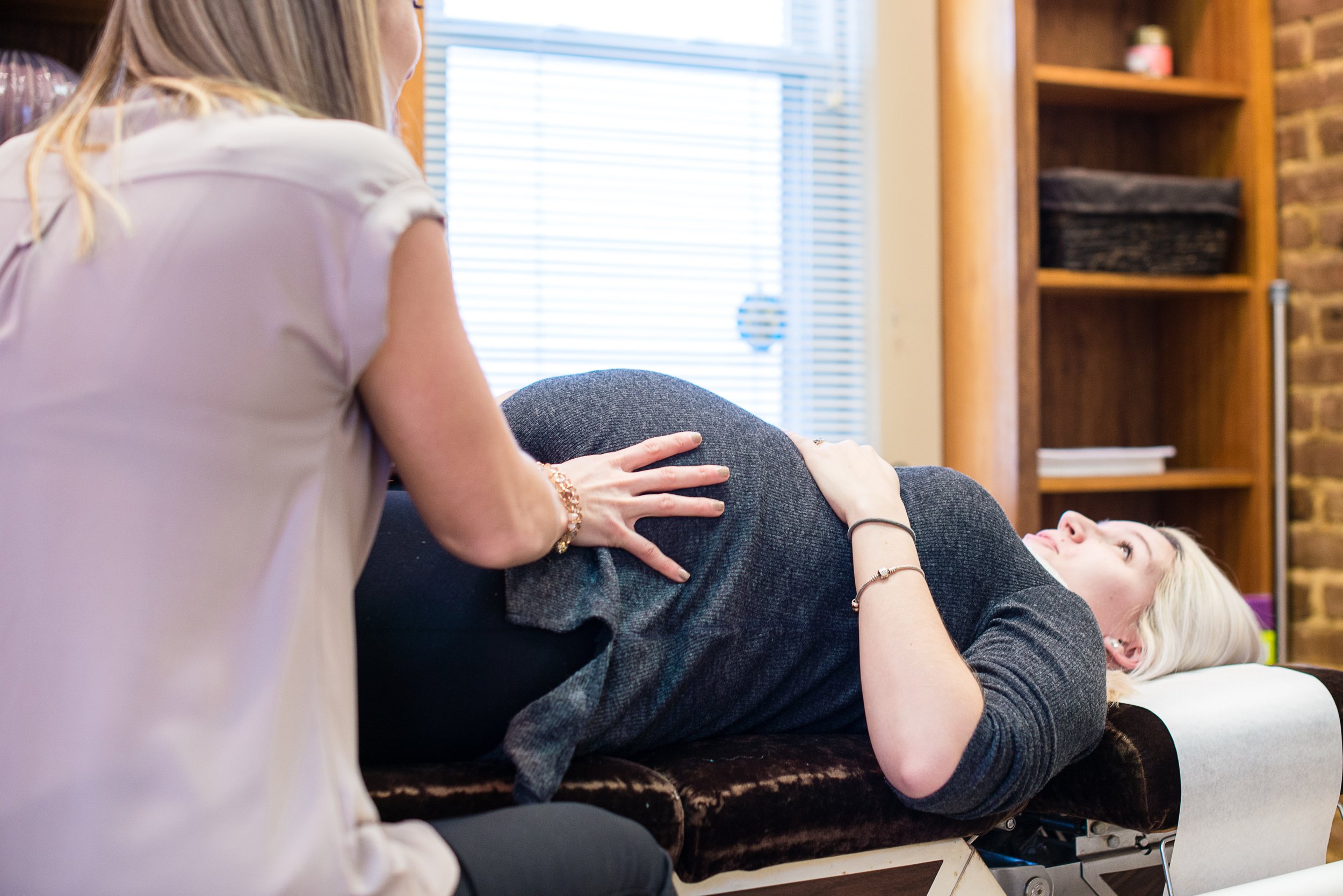
Prenatal Chiropractic
Pregnancy Care
Flourish Family Chiropractic provides the latest in safe and gentle prenatal chiropractic care. Our tables are able to accommodate your pregnant belly all the way up through your due date (even for our moms of multiples). Dr. Dana has been extensively trained in caring for pregnant and post-partum women. She is certified in Prenatal and Pediatric Chiropractic through the International Chiropractic Pediatric Association (ICPA), as well as certified in the Webster’s Technique. The Webster’s Technique is a sacral analysis and adjustment technique along with gentle soft tissue work that is specific to pregnant women. The goal of the Webster’s Technique is to reduce the effects of sacral subluxation/ SI joint dysfunction to improve the neuro-biomechanical function of the pelvis. This technique first gained fame for helping with breech babies, and has a 92% success rate in the baby getting into the normal head down position. Our goal with every pregnant patient is to ensure proper spinal alignment so that mom and baby are able to function properly, and have the best pregnancy, delivery, and birth possible!
It is common for the expectant mother to have spinal and pelvic related pains due to the hormonal changes, postural and weight changes, and other stresses during pregnancy. Every pregnancy is slightly different, but the most common pains appear on the left or right side in the low back or pelvis area. More specifically it is usually the sacroiliac joint, commonly referred to as the SI joint, or the lumbar spine that becomes problematic and the source of pain.
Other frequent problems that can be associated with Prenatal Chiropractic includes: pubic bone pain, neck pain, headaches, arm pain, numbness and tingling, carpal tunnel symptoms, mid back pain, rib pain, hip pain and sciatica.
Dr. Metzger been granted Certification by the Academy Council of Chiropractic Pediatrics (CACCP) in the International Chiropractic Pediatric Association’s (ICPA) renowned Certification Program.
Facts about chiropractic care during pregnancy:
Studies have shown that women who receive prenatal chiropractic care have on average 5-9 hours shorter labor, less perceived pain, and fewer medical interventions during birth
The Webster's Technique is a specific chiropractic analysis and adjustment for in-utero constraint. This technique uses gentle and specific adjustments and soft tissue work to reduce any interference to the nervous system and balance out the pelvic bones, muscles, and ligaments of a pregnant women to reduce any constraint to the uterus and to allow the baby to get into the best possible position for birth.
Prenatal chiropractic is safe and gentle for both mom and baby
The increase in weight from pregnancy in combination with the pregnancy hormone, Relaxin, creates postural alterations and spinal misalignments which affects the nerves, muscles, and the mobility of joints
Chiropractic care does not hurt, in fact most patients report relief after the very first visit.
Chiropractors certified to work with pregnant women use comfortable pregnancy pillows during care to allow the women to comfortably lie face down.
We will not X-ray a pregnant women. Your first visit will consist of a thorough history, consultation and examination to determine the need for care. The examination will focus on the lower back and pelvis, including the ligaments which suspend the uterus in your belly.
A woman may be a candidate for chiropractic care if she has:
Low back pain or sciatica
Fetal malpositioning such as Breech, Transverse, or Posterior
If you want a shorter labor time and fewer medical interventions
Mid back pain, rib pain, or difficulty taking a deep breath in
Pain going up and down stairs or pain with lifting your legs
Indigestion or constipation
Headaches or sinus issues
Neck pain, arm pain, numbness and tingling, or Carpal Tunnel symptoms
If you are planning a VBAC (Vaginal Birth After Cesarean)
If you would like to optimize the likelihood of having a natural vaginal birth and would like your baby to be in the best possible fetal positioning for birth
Lisa L.

